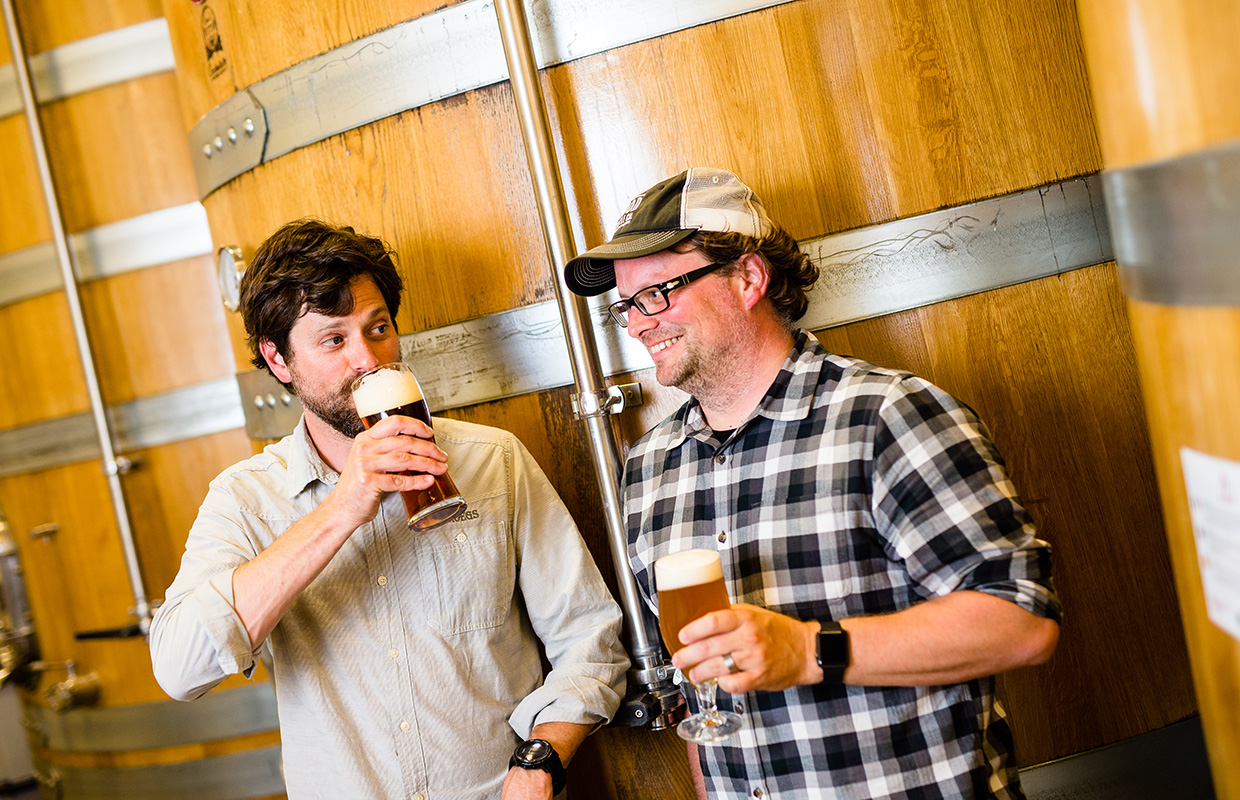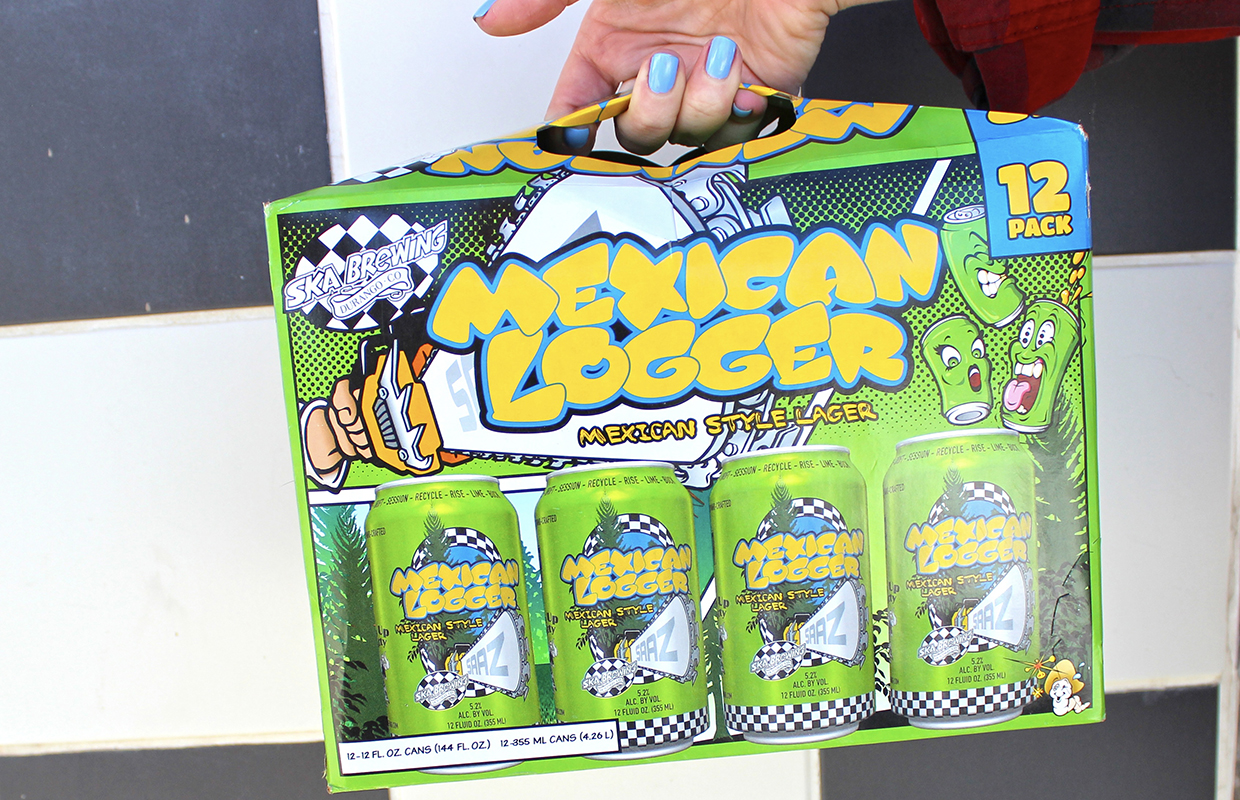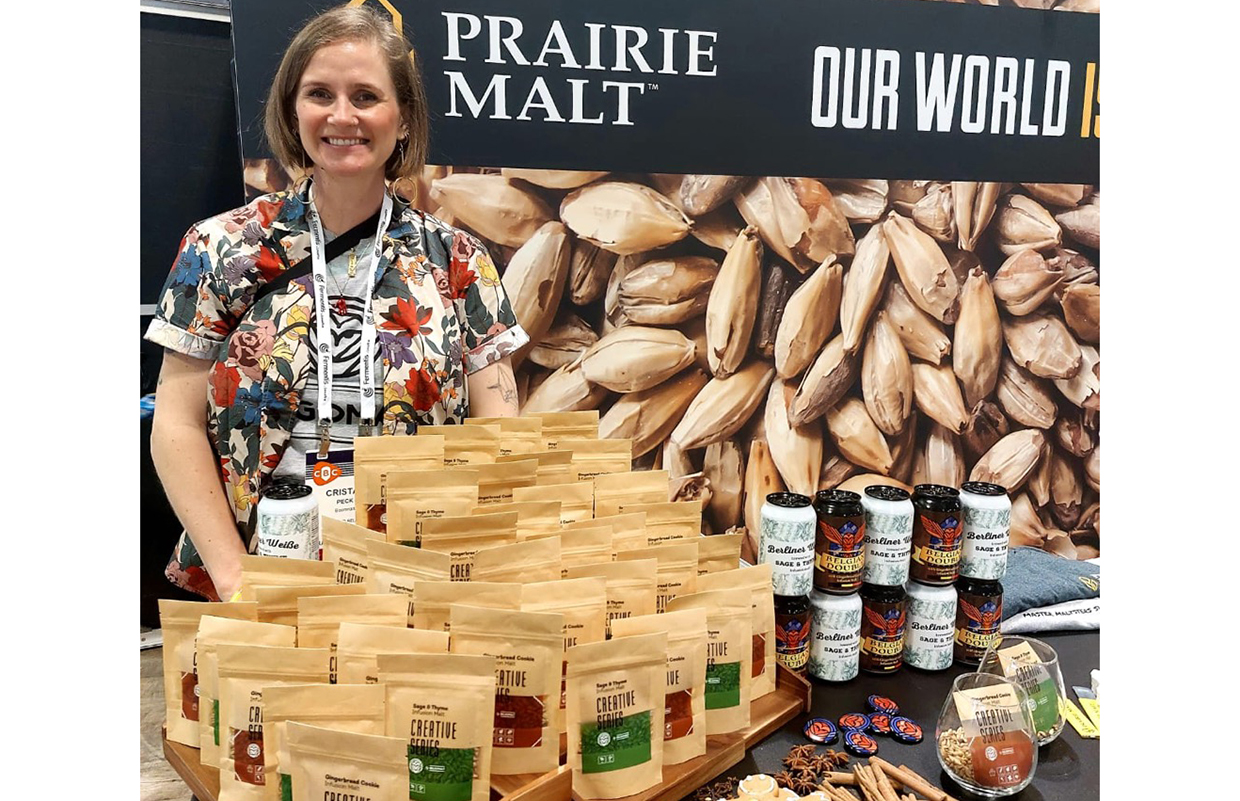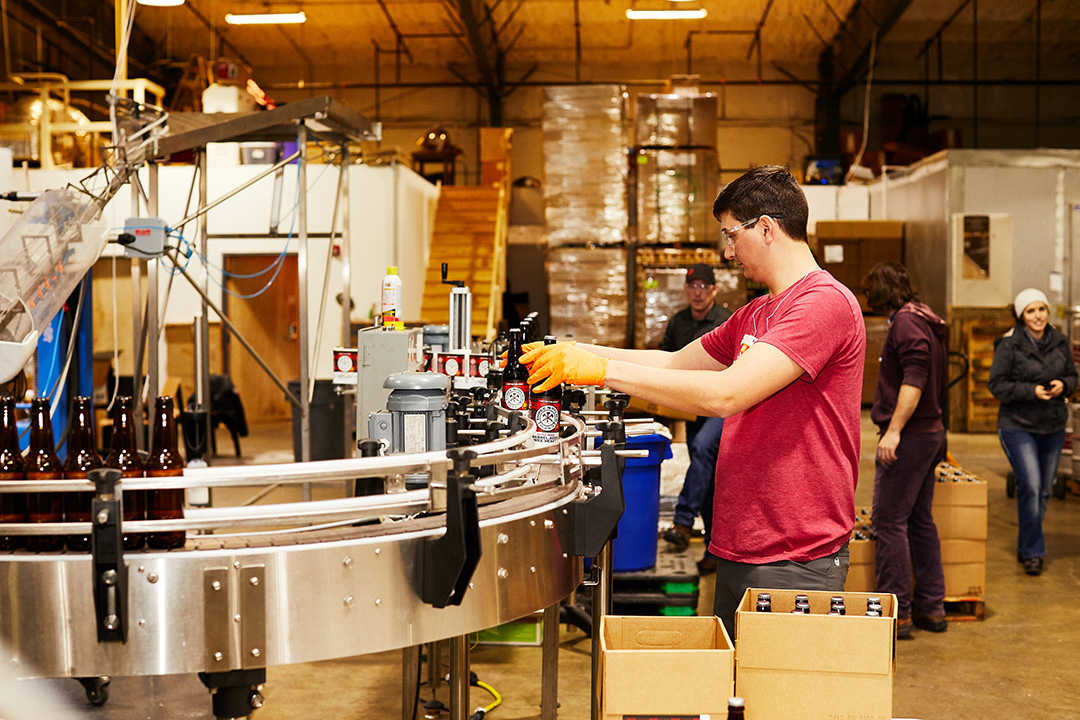
The Trogner brothers scratched an itch and nearly a quarter of a century later, they are still using the concept to help drive their Pennsylvania brewery forward. The Scratch Series is an integral concept that makes Tröegs Independent Brewing and is something John and Chris Trogner are happy to discuss as it approaches its 25th anniversary in the summer of 2022.
Rewind to 2006 and the brewery — still located at its original location in Harrisburg and brewing on a 20-barrel system from the start making cases of ESB, Bavarian Lager, Nut Brown, and Pale Ale — wanted to try something fun to celebrate 10 years. John and Chris opened up the homebrew logs and made four beers: a California Common, a Porter, a Triple, and a Barleywine.
“And that was Scratch No. 1, 2, 3 and 4,” Chris said. “From there, then it was only a few a year. It wasn’t a lot because it was 20 barrels of beer for each one.”
Now, with a Scratch Lab (a three-barrel system) and the slightly larger Scratch system, the Tröegs brew team can experiment with not just concepts, but techniques. It’s not always about creating the next popular-selling beer for the brewery, but more about learning for the team while also being able to showcase these efforts to the taproom of customers. That began in 2011 when the brewery opened up its new production brewery in Hershey and the Scratch Series is now past No. 440 with a list being updated constantly on its website for people to follow.
“A fundamental change for us came as we were coming to Hershey, but not necessarily from a customer standpoint,” John pointed out. “We plugged in a smaller brewhouse and then an even smaller brewhouse, giving us the ability to separate the creative side of brewing and discovery with the selling of brewing and that financial need. That was a fundamental change that dramatically changed how we did everything.
“Being a brewer-centric company, being able to separate the discovery of flavor from the need to sell is huge and massive. Having that Scratch Lab and the ability to come up with ideas and just execute constantly was fundamentally changing.”
John said he feels it seems like the more the brew team learns from brewing — how to create different flavors, textures, and aromas — the more they can create things that people enjoy and keep perpetually buying.
“I don’t want to be the guy that says, we brew the stuff that we like, and hope everyone else drinks it because it’s not what we do,” John said. “But from a discovery standpoint, we’re constantly asking ourselves things like how does the 30% flaked oats in a mash recipe affect the texture of a base beer that we then add Citra and Mosaic to hop up enough that the haze carries through the hop flavor?
“We’re asking ourselves brewing questions and then learning from the techniques to get us recipes. So far, we’ve been lucky and have connected with customers. But we haven’t really been searching for the next great beer or the next great thing to match a trend.”
The goal was to be a long-term and financially sustainable company that made something that the brothers and everyone involved were super proud of.
“And we hope to God that our customers would buy it,” John said with a laugh as recalled the move away from the original portfolio of beers. “We were super proud of what we were making. We just didn’t have the customers buying it.”
That’s when Trogenator, Nugget Nectar, and Hop Back emerged.
“We sort of transitioned from, let’s say, stylistic names, to types of beer that were a little more creative, but nothing crazy,” John said. “The craziest was Mad Elf, an 11% cherry beer with Belgian yeast, at that time, was silly. It wasn’t seen as a normal thing. Now, maybe not as crazy. But then it was a groundbreaking style.”
Having a little more fun with beers from a name standpoint but also from a brewing standpoint coupled with a more curious audience helped in creating a niche.
“Having an Imperial Amber Ale wasn’t a style. Adding extra hops to an Amber Ale and having slightly higher alcohol, then was a little weird, a little goofy,” John said. “We’re just having fun with it from a brewing stance. We’re brewers at heart, everything here runs from a brewing mindset. We look at how we can explore different sides of brewing at every turn, and then kind of figure everything else around it.”
John did say that occasionally they will see a trend and want to learn to understand it, even if it’s not the absolute direction the brewery ever plans to go.
“Hazy beers are a great example,” he said. “We didn’t understand it at the start, so we dove into it and dissected it, and figured out how to brew it. We needed to know why. We need to ask why is haze important in beer. Pretty quickly, we realized that depending on the density of the haze, you can carry different hop oils taste-wise and aroma-wise in the beer.
“Then we are like, ‘That’s pretty cool. Let’s play around with that.’ From that, new recipes arise. It’s brewer-curiosity driven, based on observation.”
John said that they don’t make beers to sell ‘just to pay the bills.’
“Every recipe has a purpose. And every recipe is exploring some kind of brewing, from a science side or from a taste side without ego,” he said.
When seltzers came out John said they needed to learn how to do this.
“I need to understand it. I want to know where the flavors come from,” he said. “I want to know how to get down to that clear texture and look. It’s not gonna go out into the world [for distribution], we’re just going to do it because [our] brewers should know how to do everything and do it well … at least what we consider well.”
From the longtime customer’s standpoint, the brewery’s portfolio is like night and day, Chris said. When the brewery first opened craft beer was called ‘microbrew beer’ and people were skeptical about trying something new. Now, he said, everyone is so adventurous and it helps keep Tröegs on its toes.
“That makes it a lot more challenging for us to stay on top of it and keep doing new things, but in somewhat of a calculated way so we don’t take our foot off the throttle,” Chris said.
So how did Tröegs even get to its 10th anniversary? Selling in bulk.
In the 90s, selling beer meant making it in 20-barrel batches, bottling it up, and putting it on a shelf. So the Trogners had to learn quickly how to make quality beer and how to get it to stay good in a bottle.
“We always had a concept of quality of mind, which it’s a hard thing to ultimately define but you have to define what you think quality is early on,” John said. “We had certain things — like we’re sensitive to diacetyl, we can never have any diacetyl in any beer or it’s shit — that were quality identification-wise in our world of distribution. The beer that hits the shelf has to taste a certain way for a certain amount of time. If you didn’t get that, you had to figure out why and you need to adjust that quality set to make sure you have low enough oxygen, for instance, or good enough biological stability, to sit on the Pennsylvania warm shelf for 90 days, whatever it may be. You had some pretty shitty conditions in PA.
“Think of how we were born, we were conditioned to sell 24 bottles of beer at a time and house it in a 90-degree warehouse in the middle of the summer. So it was brewing by fire pretty freakin quickly. Our quality parameters were based on that. How do we make a beer that can sit in that and sell though fast enough? Our whole mindset was: Don’t make too much beer. Don’t have too much inventory. You had to be super careful. Now, luckily, we don’t have that anymore. But it was the reality of it. Growing up through that really taught us there are certain things you’d better pay attention to, from a shelf-life perspective, which then ended up being a quality perspective.”
Still, only in their late 40s, the brothers haven’t had to start thinking about ownership and management changes. A key part of the brewery’s official name has the word “Independent” in it and both have said they are still very content running things, albeit in a more streamlined management structure than they did when they started and made all of the decisions.
Chris said they figured out in the very beginning that they had to split directions, John helped lead the direction of the beer while Chris went out to sell it. That has changed since the 90s, but the brothers still have a big part of the direction.
“It’s not centralized in regards to decision making, each team can make their own choices and decisions and kind of run with it,” John said. “As long as we’re all pointed towards the same vision and path, we can get on the bus together.
“We [John and Chris] do dive pretty deep into some things, like when it comes to recipe development. I have a team that sits down and we literally talk through every single step of brewing … what valves are gonna open, how much steam we’re going to put in … we do a deep dive on that path. If we’re talking about food in the kitchen, I’ll sit with the creative team and we’ll talk through who we’re going to order lettuce from locally. So we do choose what to dive deeper into but we don’t have our hands day-to-day in everything. Because you couldn’t, you couldn’t do that. You just can’t run that way.”
Chris said that the big transition was when they opened up the Hersey facility and hired more than 100 people to get it opened.
“It wasn’t necessarily hard. I think maybe the hard part is sometimes when there’s just two of you, you can make quick decisions,” Chris said. “If we wanted to change something tomorrow in a new beer or anything else, we’d just do it. Now it’s a little bit more complicated. We’ve got to basically get the whole team together and brainstorm, have ideas, and come to an agreement. I wouldn’t say it’s harder. It’s just a longer process.”
It’s a process that has worked as the brewery has grown steadily and more than doubled its output since opening the Hershey production spot to become one of the Top 20 largest craft breweries in America without having a major foothold outside of its home state, which shows a successful path.
“Success is a hard thing to define,” Chris said. “We try to [define it] ahead of time. It’s not the final number that is success for us. Each beer has a purpose: from a recipe development standpoint, that’s one path; from a ‘success standpoint,’ sometimes beers are successful if we learn from it. Learning a recipe, or an ingredient. It’s just a Scratch beer that comes across the bar, and we have some guests give us some feedback … that’s successful. Did it sell really fast or not? That wasn’t the goal of that beer.
“It’s not necessarily the dollars and cents of the beer that makes it successful. It is engaging customers somehow. But at the same time, we have to balance our distributor and retail partners to make sure that they’re happy as well. That’s a tough dichotomy.”
Photo courtesy Tröegs Independent Brewing




Be the first to comment